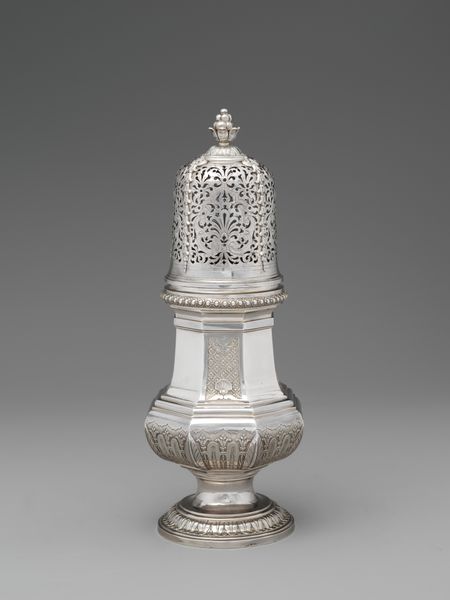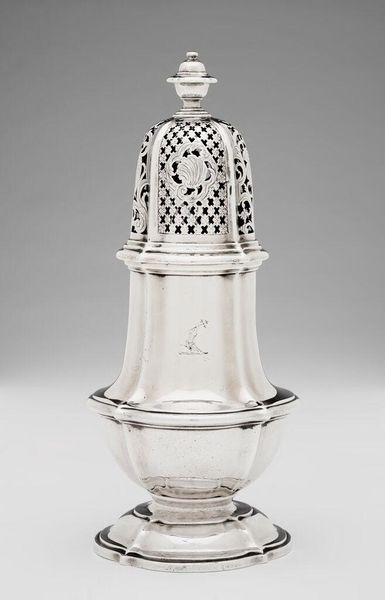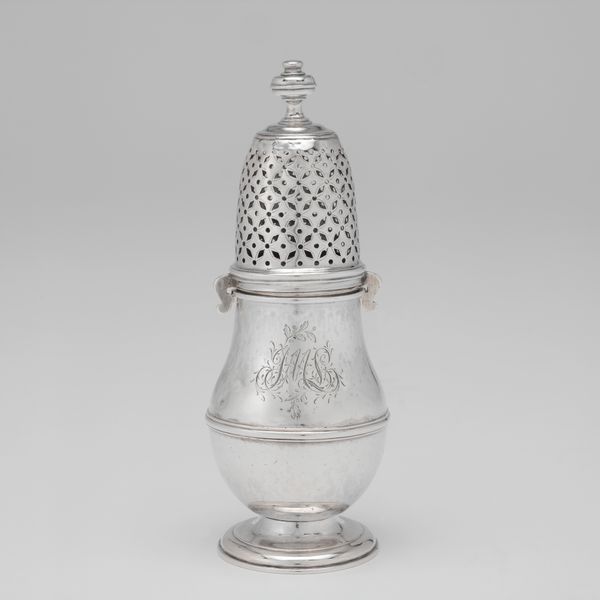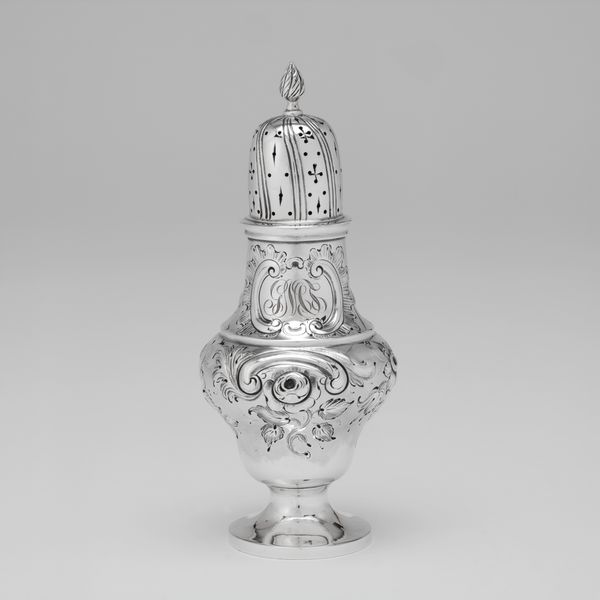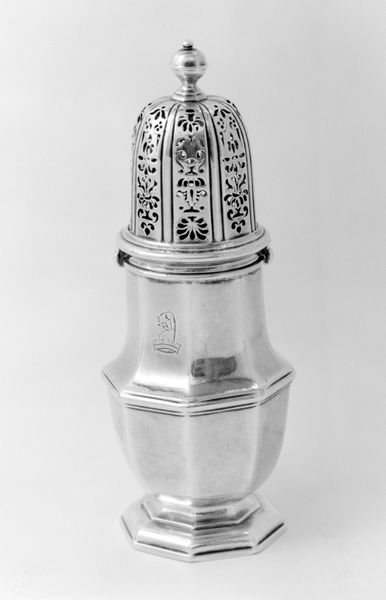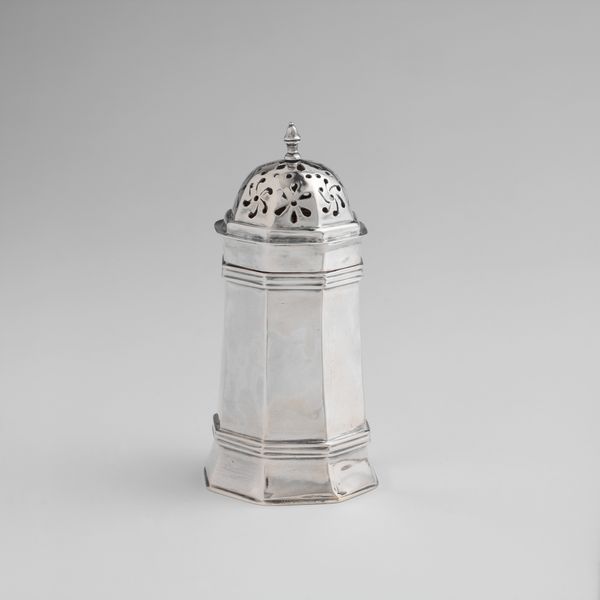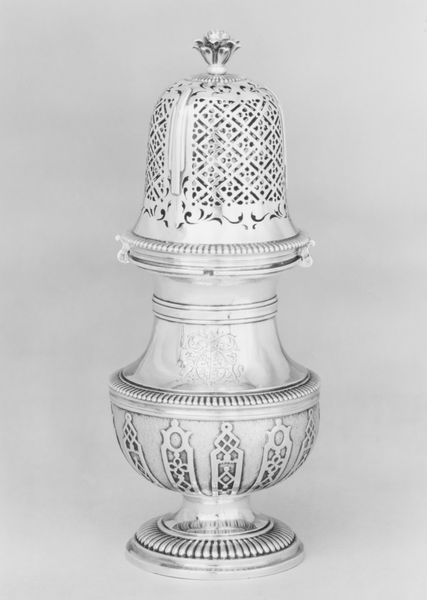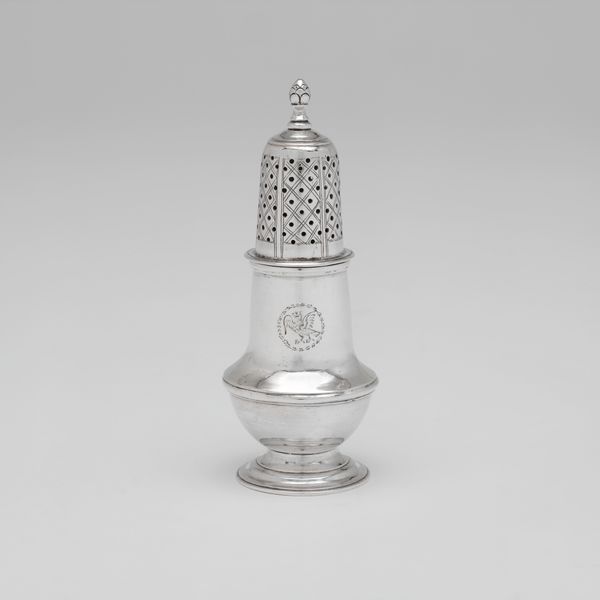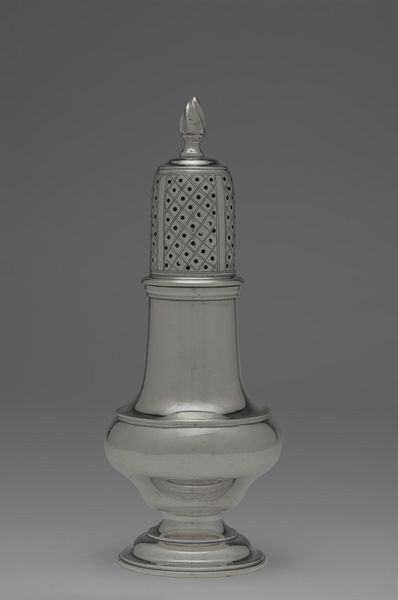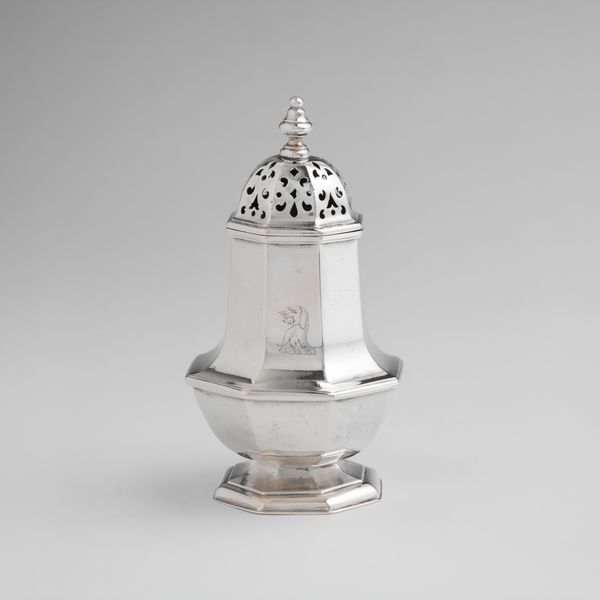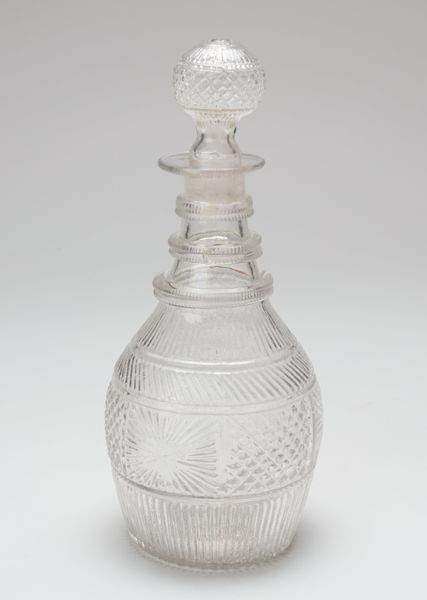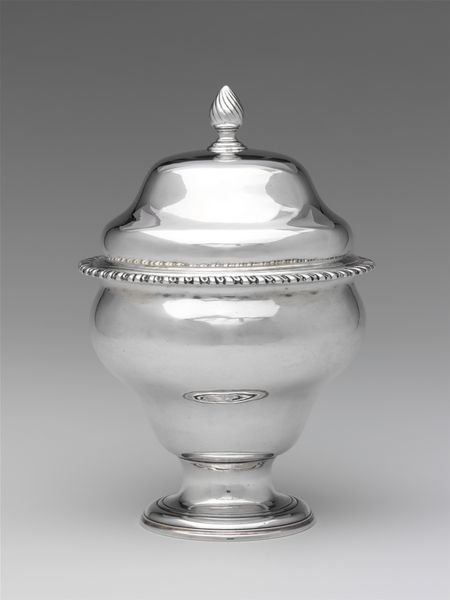
Dimensions: 13.5 × 5.4 × 5.4 cm (5 5/16 × 2 1/8 × 2 1/8 in.)
Copyright: Public Domain
Editor: This is "Caster," made between 1760 and 1775 by John Gardiner. It’s silver, so quite striking in its reflective qualities. It's categorized as decorative art, and looking at the elaborate design on the top part of the vessel makes me curious about the social and historical context it comes from. What can you tell me about it? Curator: Well, the “Caster” here gives us a direct link to the 18th century and the rituals around tea and dining, doesn’t it? The availability of sugar, for example, signified status and wealth. Do you notice the piercings? Editor: Yes, the upper part has a really intricate, symmetrical pattern of holes. Curator: Precisely! This regulated how sugar, likely a luxury good at the time, would be dispensed. Consider who could afford such pieces, and what message displaying something like this might send. Think of the social hierarchies it reflects. Editor: It's amazing to think of something so beautiful being tied to social standing. So, possessing decorative art like this Caster almost functions as a subtle display of social and economic power. Did the intricate pattern add to that effect? Curator: Absolutely. Labor was also a commodity and its visibility in the detail work further advertised affluence. It reflects consumer culture and the artistry associated with this kind of presentation. These objects shaped societal rituals as much as they were shaped *by* them. Editor: That's fascinating; I'll never look at a sugar caster the same way again. Thank you! Curator: My pleasure. Now you're seeing art history in a completely new light.
Comments
No comments
Be the first to comment and join the conversation on the ultimate creative platform.
